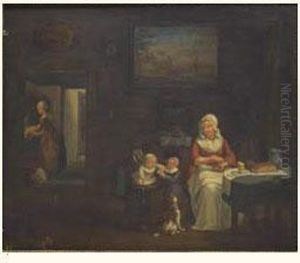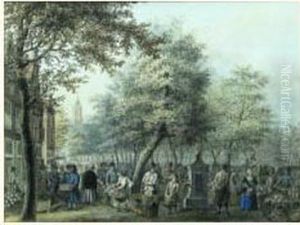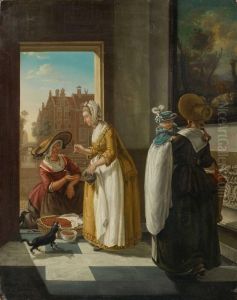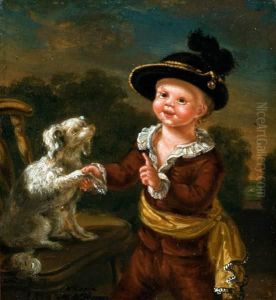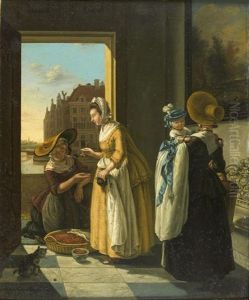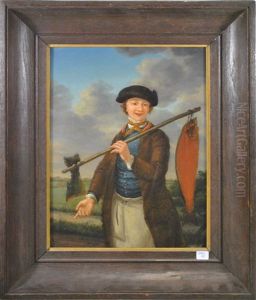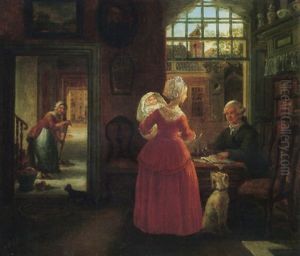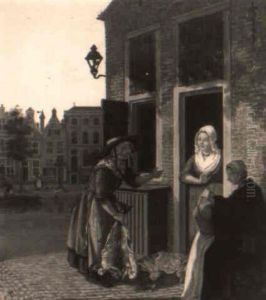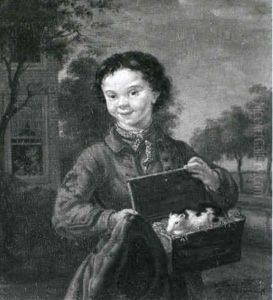Maria Margaretha La Fargue Paintings
Maria Margaretha La Fargue was a Dutch artist born in 1743 in The Hague, Netherlands. She was part of a family of artists, which included her father, Paulus Constantijn la Farge, who was a painter and a draftsman, and her siblings who were also involved in the arts. Her brother, Johannes, was known for his miniature portraits, and her sister, Elisabeth Barbara, was a pastelist.
Maria Margaretha La Fargue is primarily known for her work as a painter and an engraver. She was active during the 18th century, a time when it was relatively rare for women to achieve recognition in the arts. Despite the gender norms of her time, La Fargue was able to establish herself as a professional artist. She worked in various mediums including pastels, watercolors, and oils, and her oeuvre includes genre scenes, landscapes, portraits, and cityscapes.
As a woman artist in the Dutch Republic, La Fargue's success was notable. Her works were appreciated for their attention to detail, vibrant colors, and the liveliness of her subjects. She was skilled in capturing the essence of daily life in her genre scenes, which often featured figures engaged in everyday activities. Additionally, her cityscapes serve as valuable historical records of The Hague and its surroundings during the 18th century.
Throughout her career, Maria Margaretha La Fargue exhibited her work and received commissions, which was indicative of her standing in the art community. She remained active as an artist throughout her life, contributing to the cultural scene of The Hague.
Maria Margaretha La Fargue passed away in 1813. While she may not be as widely known as some of her male contemporaries, her work provides an important perspective on the Dutch artistic landscape of the time and adds to our understanding of the contributions of women artists in European art history.
